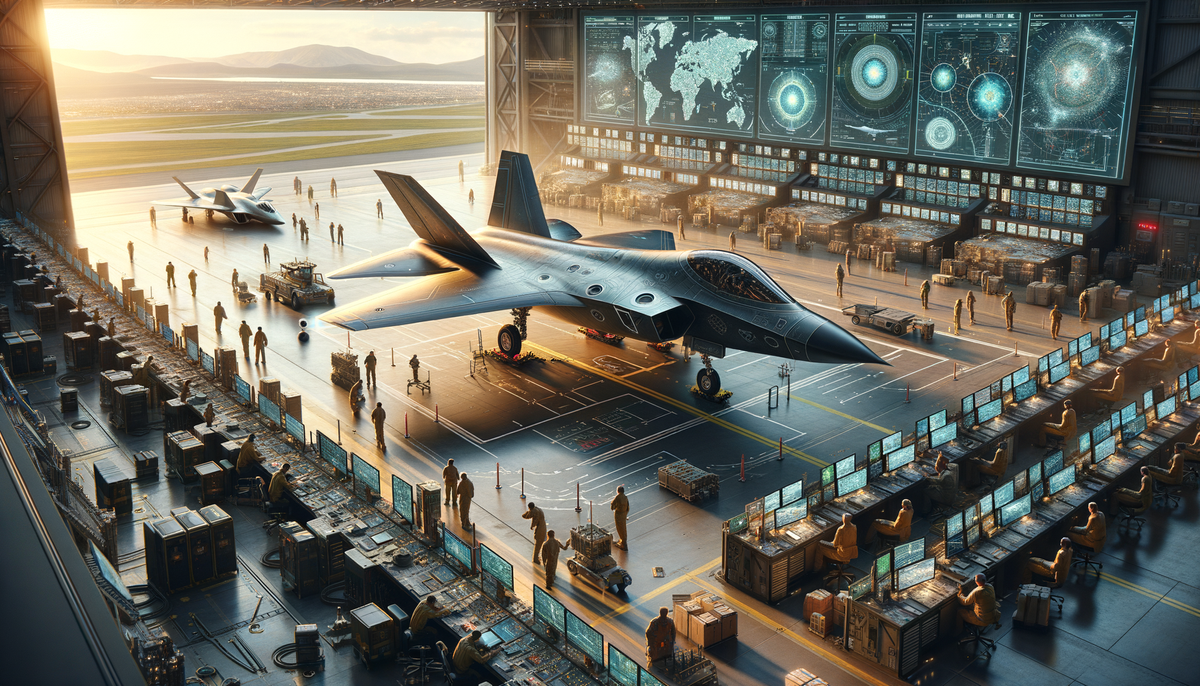Exploring the Cutting-Edge JF-17 Developments: A Beacon of Modern Aviation
An in-depth exploration of the JF-17 Thunder, its development, capabilities, and strategic importance.

Exploring the Cutting-Edge JF-17 Developments: A Beacon of Modern Aviation
The JF-17 Thunder, also known as the FC-1 Xiaolong, stands as a testament to modern aviation technology and the fruitful collaboration between China and Pakistan. Developed to meet the demands of a versatile combat landscape, the JF-17 has become a core component of the Pakistan Air Force fleet. This aircraft continues to evolve, incorporating cutting-edge technologies and addressing modern combat challenges.
The JF-17: Backbone of Modern Air Warfare
Positioned prominently in recent news, the JF-17 aircraft has captured global attention due to its active role in the geopolitical landscape, particularly concerning the India-Pakistan dynamics. As tensions heighten in regions such as Kashmir, the strategic presence of the JF-17 becomes evident. According to reports from South China Morning Post, the Pakistan Air Force has showcased the JF-17's advanced capabilities, bringing into focus its pivotal role in strengthening national defense.
Furthermore, a piece by the Vox outlines the escalating tensions between India and Pakistan, emphasizing the strategic implementations of aircraft like the JF-17 in maintaining aerial supremacy and contributing to deterrence strategies. The platform’s operational history reflects its adaptation to ever-evolving threat environments.
Development and Design: A Historical Journey
The conception of the JF-17 is rooted in the late 1990s when the Chengdu Aircraft Industry Corporation (CAC) of China collaborated with the Pakistan Aeronautical Complex (PAC) in Kamra to create a cost-effective, modern fighter. Aimed at replacing aging fighter platforms, the JF-17 was designed to perform diverse roles including air-to-air combat, air-to-ground attacks, and reconnaissance missions. Its modular design highlights the collaborative engineering prowess pulling from experts across two nations.
Technical Marvels and Performance
| Specification | JF-17 Thunder |
|---|---|
| Crew | 1 (JF-17A/C), 2 (JF-17B) |
| Length | 14.9 m (47 ft) |
| Wingspan | 9.45 m (31 ft) |
| Height | 4.72 m (15 ft) |
| Wing area | 24.4 m² (261 ft²) |
| Empty weight | ~6,411 kg (17,560 lbs) |
| Maximum takeoff weight (MTOW) | 13,500 kg (29,762 lbs) |
| Powerplant | Klimov RD-93 or WS-13 engine |
| Maximum speed | Mach 1.6 (~1,910 km/h) |
| Cruise speed | 1,359 km/h (844 mph) |
| Combat range | 900 km (560 miles) |
| Rate of climb | 17,984 m/min (59,000 ft/min) |
| Armament | 1×23 mm GSh-23 cannon, various missiles and bombs |
The JF-17's capabilities underscore its standing as an efficient, modern fighter jet. Its Klimov RD-93 or WS-13 engines afford it superior thrust, enabling speeds up to Mach 1.6. Such performance metrics are pivotal, particularly in scrambled responses and air engagements.
Advanced Avionics and Armament
Equipped with the sophisticated KLJ-7 multi-mode radar, the JF-17 provides robust target tracking and engagement across various combat scenarios. Its armament versatility includes a range of air-to-air missiles such as the PL-5, PL-9, and PL-12, in addition to anti-ship missiles and general-purpose bombs, making it a formidable force in any theater of operations.
Operational History and Modernization
Since its induction in the late 2000s with the Pakistan Air Force, the JF-17 has undergone continuous upgrades, with the newer Block III variants reflecting significant technological advancements. These newer models bring improved avionics, enhanced payload capacities, and advanced communication systems, thus bolstering the aircraft's standing in modern aerial warfare.
Insights from The Eurasian Times further elucidate on the expedited delivery and upgrade schedules that highlight China's role in augmenting Pakistan's military capabilities amidst regional uncertainties.
Strategic Implications and Practical Insights
For professionals engaged with the JF-17 program, understanding its strategic deployment and upgrade pathways offers actionable insights into modern aircraft lifecycle management. Companies like ours, specializing in aviation consultancy, offer tailored solutions to maximize fleet efficacy, from planning technological upgrades to optimizing pilot training modules.
For nations evaluating the JF-17 for purchase, key considerations include its affordability and the advantages of the collaborative support network between China and Pakistan, ensuring sustained operational effectiveness with cost-efficiency.
Conclusion: Looking Forward
The JF-17 Thunder not only showcases the prowess of Sino-Pak collaboration but also provides a glimpse into the future of cost-effective, versatile combat aircraft capable of meeting contemporary and emerging defense needs. As the global defense industry moves towards more integrated and multifunctional platforms, the JF-17 stands as a model for strategic innovation that offers immense value across different operational domains.
Call to Action: If you are interested in exploring how the JF-17 can enhance your air defense strategy, or wish to gain deeper insights into the technological advancements in aviation, feel free to reach out to our team of experts. Engage with us to navigate the evolving aerospace landscape efficiently and strategically.




